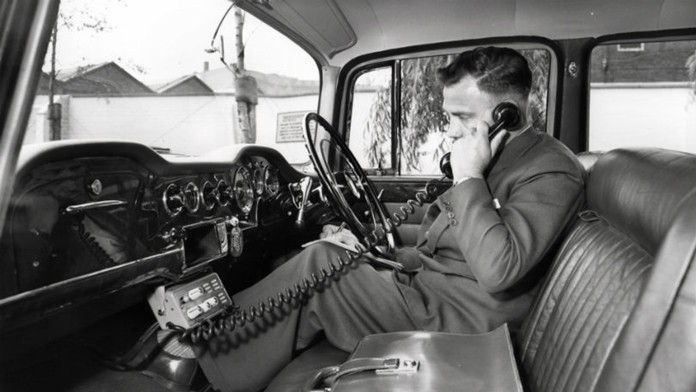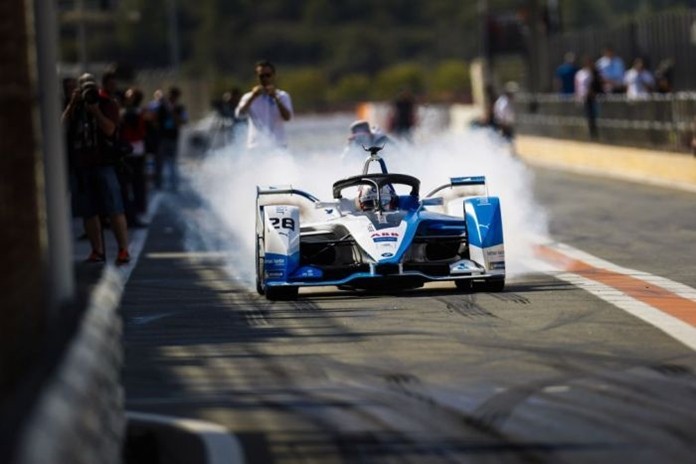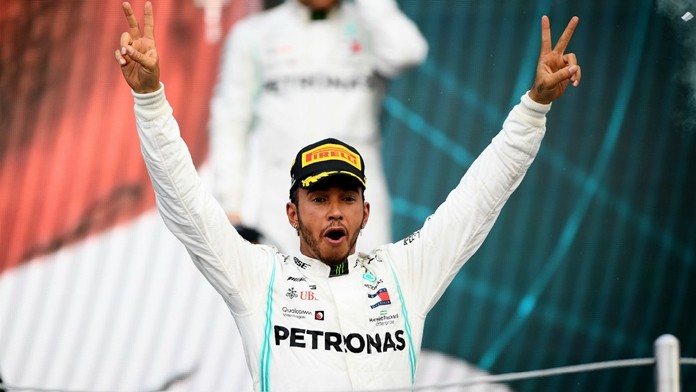Australia uses new technology to catch drivers on phones
Australia (AP) — An Australian state is attempting to persuade people to put down their smartphones while driving by rolling out cameras to prosecute distracted motorists.
New South Wales Roads Minister Andrew Constance said Monday that Australia’s most populous state is the first jurisdiction in the world to use such technology to punish drivers distracted by social media, text messages or phone calls.

Road safety experts are alarmed at the growing prevalence of accidents involving drivers using smartphones on New South Wales roads. Experts say drivers who illegally use phones increase their chances of an accident four-fold.
“There is no doubt drink-driving as far as I’m concerned is on a par with mobile phone use, and that’s why we want everyone to be aware that you’re going to get busted doing this anytime, anywhere,” Constance told Australian Broadcasting Corp.
The government intends to roll out 45 Mobile Phone Detection Cameras across the state by December, he said.
In fact, each unit contains two cameras. One camera photographs a car’s registration plate and a second high-set lens looks down through the windscreen and can see what drivers are doing with their hands.
A six-month trial of two fixed cameras this year checked 8.5 million vehicles and detected more than 100,000 drivers with their hands on phones, including one driver who was using a phone and iPad simultaneously. Another driver had a passenger steer while they both held phones, the government said.
The units use artificial intelligence to exclude drivers who are not touching their phones. Photos that show suspected illegal behavior are referred for verification by human eyes before an infringement notice is sent to the vehicle’s registered owner along with a 344 Australian dollar ($232) fine. Some cameras will be permanently fixed on roadsides and others will be placed on trailers and moved around the state.
The government wants to expand the program to 135 million checks a year by 2023. New South Wales has 5.2 million registered vehicles.
National Roads and Motorists’ Association spokesman Peter Khoury, a leading advocate for road users, accused the government of using stealth to crack down on illegal phone use. While the association supported tougher action against drivers distracted by phones, it wanted signs warning motorists that phone detection cameras were operating in an area, as happens with speed cameras in the state.
Government modeling found that the phone detection cameras could prevent 100 fatal and serious injuries over five years.
The annual state road toll in New South Wales fell by 35 deaths to 354 last year.
Police said more than 16,500 drivers had been fined for illegally using phones so far this year.
Drivers are allowed to use phones in hands-free cradles and through Bluetooth. But it is illegal to touch a phone while driving except to pass it to a passenger. The ban even applies to drivers who are stationary at red lights or stuck in traffic jams.
Constance said his government was relaxing the law to allow drivers to legally pay with their phones at restaurant drive-throughs.
(Comment: Constable Plod can now look through your windows, hoping to catch a driver scratching his genitals. I’m sure they could make a case to show that just chatting to one’s passenger is far too dangerous and safety sealed boxes would be installed in all cars from now on. Particularly when you read that even touching your phone while stationary at a red light is a heinous crime. The only problem now is how to convert the crime into baht that is understood by the BIB.)
The days of the motoring enthusiast are gone
If you are an enthusiast, and you must be if you read this column, you will have already looked into what the future has in store for you (and me).
Digital technology is lining up to take your car away from you, and replacing it with a ‘virtual’ car which can ‘talk’ to other cars, and without a human driver, to take you to your required destination.
The motive power will be electric, with some world governments already banning the internal combustion engine because it is a health hazard. Petrol stations will be supplanted by electric battery rechargers. Switched on entrepreneurs will have coffee stalls to keep you amused while the 20 minute recharge takes place.
What will happen to the petrol cars? Some out of the way stations will keep a small quantity of petrol, at a price, and you will only be allowed to drive your Aston Martin on alternate Sundays.
Oh, you wanted diesel fuel? Sorry but they were banned a decade ago after the Wolfsburg debacle (thank you VW). Something to do with keeping the planet clean. Mind you, the mounds of spent batteries will be a new kind of rubbish.
Now for all these digital electronic masterpieces to work, you will learn to rely on the car’s GPS. How many times has your computer crashed? There’s one of those inside all the cars of the future, and they will crash too. Let’s hope it isn’t on the Bangkok highway. Where is the GPS when you need it?
Of course the legal side of digital motoring will spawn a new style of lawyer. When your driverless car hits another driverless car, who is to blame? However, when driverless car A hits human being B, protracted legal cases will ensue as A and B wish to sue each other. Insurance companies will go close to ruling the world.
Ride sharing is being held up for us, as the way to go. Cuts down fuel costs, be that battery, hydrogen or nuclear nuggets. But ride sharing can only work if the other passengers are going the same way too. The alternative is walking. Make sure you have some sturdy walking shoes.
And motor sport? The FIA has already stacked the F1 deck, by putting its money on every horse in the race – notably Formula E. As F1 becomes an anachronism, come in Formula E, the FIA is ready to give you top billing.

Lewis Hamilton’s 6th WDC
So Lewis Hamilton is today’s poster boy in the UK. However, one of Australia’s automotive commentators is Will Hagon who injected some sanity over all the hype surrounding Lewis Hamilton’s sixth World Drivers Championship. Will’s words of wisdom are worth reading.
“Poor old Juan Manuel Fangio, his remarkable records and achievements oft forgotten by those not lucky enough to be across one of the finest drivers and people ever to adorn grand prix racing.
“The Maestro’ was five years older when he started his GP career than Hamilton is now.

“No one has matched Fangio’s start win record, 24 of 51 – 47 percent wins, in an era when around a third of drivers died in crashes.
“He wasn’t bad in qualifying either, in an era when drivers had more in qualifying either, in an era when drivers had more influence on their cars’ speed than with today’s electronically assisted cars.
“In days when grids were straight lines, not staggered as today, and they alternated 3, 2, 3 and helped promote close racing.
“But I digress. Will Hamilton get his 7th WDC? In the petrol age, yes. In the electric age, no. He is destined to sit at the top of the tree with Michael Schumacher and listen as the E racers whizz by. No more fumes like Castrol R or barking exhausts. All will be sacrificed to get the planet clean. And to that I say, Fat Chance.”
Hypermiling – a forgotten sport?
A dictionary entry for Hypermiling states that it is the act of driving using techniques that maximize fuel economy. Those who practice these techniques are referred to as “hypermilers” (or perhaps greenies?)
Hypermiling is defined by the New Oxford American Dictionary as the attempt to maximize gas mileage by making fuel-conserving adjustments to one’s vehicle and one’s driving techniques. In fact, in 2008, the word Hypermiling was selected as the best new word of the year by the New Oxford American Dictionary.
Hypermiling, which can be practiced in any vehicle regardless of its fuel economy, had gained in popularity as a result of the rise in gasoline prices during the 2000s. While common techniques can be carried out by average motorists making minor changes in their driving habits, many Hypermilers use more advanced techniques, some of which are illegal in most if not all jurisdictions.
Hypermiling has come under fire from several quarters due to claims of dangerous or unlawful behavior by some Hypermilers. As a result, the Hypermiling Safety Foundation was formed in August 2008 to promote a safety and public awareness program, advocating legal fuel-saving techniques.
In some places, Hypermiling contests have been held to see who can get the highest mpg on a selected course.
A Maximum Fuel Economy contest was held in Elkhart, Indiana, a few years ago where “world records” for the Honda Insight (213 miles per US gallon (1.10 L/100 km; 256 mpg-imp) round trip), Toyota Prius (136 miles per US gallon (1.73 L/100 km; 163 mpg-imp) round trip) and the Ford Escape Hybrid (76 miles per US gallon (3.1 L/100 km; 91 mpg-imp) mpg round trip) were achieved, albeit having been achieved while rolling through all stop signs and having the vehicle tires inflated well beyond recommended specifications! The record for the most miles achieved out of a single tank of gas, with 2,254 miles (3,627 km) from the 13.7 US gallons (52 l; 11.4 imp gal) tank of a 2006 Honda Insight, represents an average of 164.53 miles per US gallon (1.4296 L/100 km; 197.59 mpg-imp) for the entire distance.
Now all that sounds terribly new and “green” and is the sort of fodder that the global warming people love to seize upon, to show their commitment to saving the planet. I am afraid I am with GM’s Bob Lutz who stated that “Global warming is a crock of sh*t.” And have you noticed they now call it ‘Climate Change’ so they are backing both horses in the race – heating or cooling! And to show my true callous nature, if Bob and I are wrong we’ll both be dead long before Bangkok disappears beneath the rising seas, so it isn’t our problem!
 |
 |
 |





